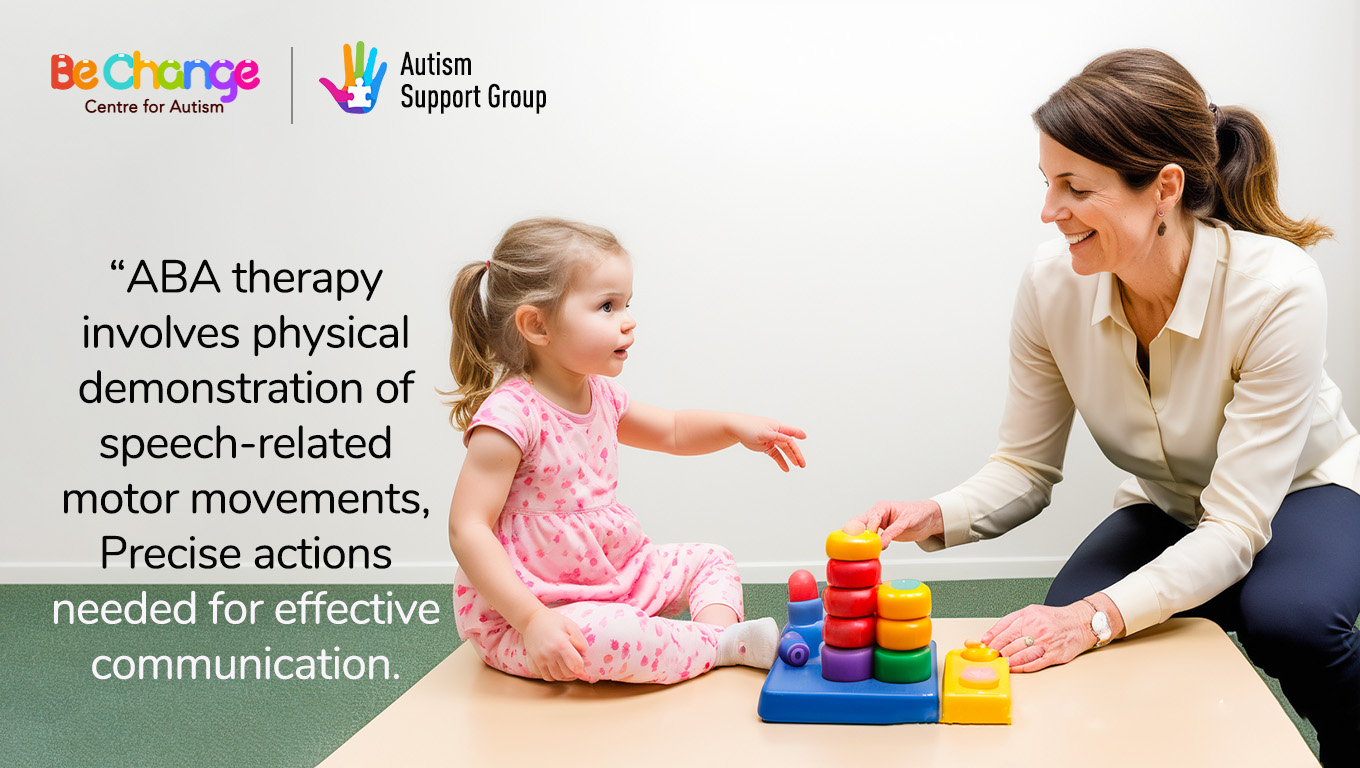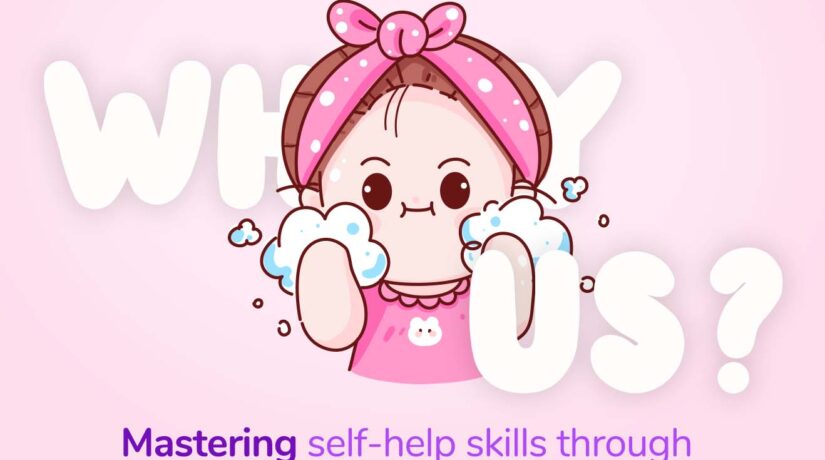Unlocking Speech through ABA Therapy
Applied Behavior Analysis (ABA) therapy is a comprehensive and individualized approach widely used to enhance various skills, especially in individuals with autism spectrum disorder (ASD). A key focus of ABA therapy for speech development is the significant emphasis placed on motor imitations.
Understanding Motor Imitations in ABA Therapy
Motor imitations in ABA therapy refer to the act of copying physical movements or gestures demonstrated by others. This concept holds significant importance, particularly in the context of speech development, where ABA therapy places a strong emphasis on using motor imitations to teach individuals how to replicate the necessary oral-motor movements for effective communication.
In simpler terms, when we talk about motor imitations, we’re discussing the ability to imitate the movements involved in speaking. This aspect becomes crucial in helping individuals, especially those undergoing ABA therapy, learn the specific physical actions required to communicate verbally. Whether it’s the movement of the lips, tongue, or other facial expressions, mastering these motor imitations is a fundamental step in developing clear and expressive speech.
Importance in Speech Development
-
Building Oral-Motor Skills:
In ABA therapy, a key focus is on enhancing oral-motor skills, especially for individuals, particularly children with Autism Spectrum Disorder (ASD). ABA therapists prioritize motor imitations as a means to assist in the development and strengthening of the essential oral-motor skills required for effective speech. This involves guiding individuals, often children with ASD, in imitating specific movements such as lip and tongue actions, jaw movements, and facial expressions. These imitations are crucial in the production of various speech sounds, forming the foundation for clear and articulate verbal communication.
-
Enhancing Articulation:
In the realm of ABA therapy, a significant goal is to refine articulation – the ability to form distinct speech sounds. This refinement is achieved through a concentrated focus on motor imitations. ABA therapy employs a targeted approach to assist individuals in mastering the precise movements necessary for clear and intelligible speech. By honing in on these motor imitations, individuals can develop the skills needed to articulate speech sounds distinctly, contributing to effective verbal communication.
-
Facilitating Verbal Imitation:
Motor imitations serve as a bridge to verbal imitation, Verbal imitation is a fundamental aspect of the process, and motor imitations serve as a stepping stone towards this skill. As individuals become proficient in replicating physical movements, the transition to imitating vocalizations and eventually producing their own speech becomes more seamless. In essence, mastering motor imitations acts as a foundational step, paving the way for individuals to progress towards independent and expressive verbal communication.
Autism Support Group : https://www.facebook.com/groups/SupportAutism
 ABA Therapy Techniques for Motor Imitations in Speech
ABA Therapy Techniques for Motor Imitations in Speech
-
Modeling:
In this technique, therapists use modeling to guide individuals in ABA therapy. This involves physically demonstrating speech-related motor movements, showcasing the precise actions needed for effective communication. By providing a tangible example, therapists encourage individuals to imitate these actions. Modeling serves as a hands-on approach, allowing individuals to visually grasp and replicate the motor imitations necessary for speech development.
-
Prompting and Reinforcement:
The technique of prompting and reinforcement is a cornerstone for facilitating motor imitations in speech development.
Prompting Strategies:
- ABA therapists utilize prompting strategies by offering cues or assistance to guide individuals in imitating specific motor actions. These prompts serve as gentle nudges, helping individuals navigate the process of replicating essential movements involved in speech.
Positive Reinforcement:
- Positive reinforcement is a key component accompanying prompting. Successful imitations are met with positive reinforcement, such as praise or rewards, creating a motivational loop. This encouragement fosters continued progress as individuals associate the act of imitation with positive outcomes, further motivating their engagement in the therapeutic process.
-
Task Analysis:
Task analysis is a valuable technique employed to facilitate the development of speech-related motor skills.
Breaking Down Speech-Related Motor Skills:
- Task analysis involves breaking down complex speech-related motor skills into smaller, more manageable components. This deconstruction allows therapists to dissect the intricate movements involved in speech, making the learning process more accessible for individuals.
Systematic Targeting and Teaching:
- Through task analysis, therapists can systematically target and teach individual movements. This methodical approach ensures that each specific motor action is addressed with precision, offering a structured learning environment. By focusing on individual components, individuals can master each movement before progressing to the next, promoting a thorough understanding of the motor imitations required for effective speech.
-
Generalization:
Within the framework of ABA therapy, a critical aspect is the emphasis on generalization, specifically concerning motor imitations.
Expanding Skills Across Contexts:
- ABA therapy underscores the importance of generalization, which involves individuals applying learned oral-motor skills beyond the specific therapy setting. This means that the skills acquired through motor imitations are not limited to a controlled environment but are transferable to various contexts and communication settings.
Ensuring Versatility in Communication:
- By promoting generalization, ABA therapy aims to ensure that individuals can utilize their acquired motor imitation skills in real-life situations. Whether in different social settings or diverse communication scenarios, the goal is for individuals to demonstrate versatility and effectiveness in their oral-motor skills, contributing to more comprehensive and adaptable communication abilities.
Progress Monitoring and Individualization
One of the strengths of ABA therapy is its capacity for individualization. Therapists tailor interventions based on the unique needs and abilities of each individual. Progress in motor imitations and speech development is closely monitored, allowing for adjustments and refinements to ensure optimal outcomes.
Get Access Now: www.bechange.in
Conclusion: Empowering Speech through Motor Imitations
In the realm of ABA therapy for speech development, prioritizing motor imitations proves to be an effective and nuanced approach. By systematically addressing oral-motor skills, articulation, and verbal imitation, individuals, especially those with ASD, can embark on a transformative journey towards unlocking the power of speech. The meticulous techniques employed in ABA therapy create a supportive environment where each imitated movement becomes a building block for clear and expressive communication.
Applied Behavior Analysis (ABA) therapy is a structured and individualized approach used to enhance various skills, including speech, especially in individuals with autism spectrum disorder (ASD). ABA therapy for speech development focuses on techniques like motor imitations to teach oral-motor skills, articulation, and verbal imitation.
ABA therapy excels in individualization. Therapists tailor interventions based on the unique needs and abilities of each individual. This ensures a personalized approach, allowing for adjustments and refinements to optimize speech development outcomes.
Motor imitations involve replicating physical movements, a key aspect of ABA therapy for speech development. By mimicking oral-motor movements and gestures, individuals, particularly those with ASD, learn the precise actions necessary for clear and effective communication.
Absolutely. ABA therapy is highly adaptable and can be effective for non-verbal individuals. It focuses on various communication methods, including sign language, picture communication systems, and augmentative communication devices, to enhance overall communication skills.
Progress is closely monitored through systematic assessments and observations. ABA therapists track advancements in motor imitations, oral-motor skills, articulation, and verbal imitation. This ongoing evaluation allows for tailored adjustments to the intervention plan.





